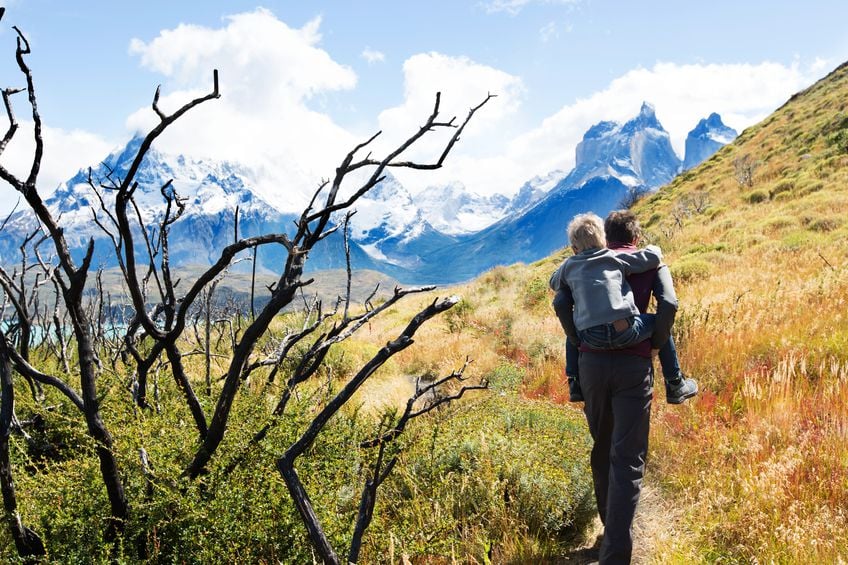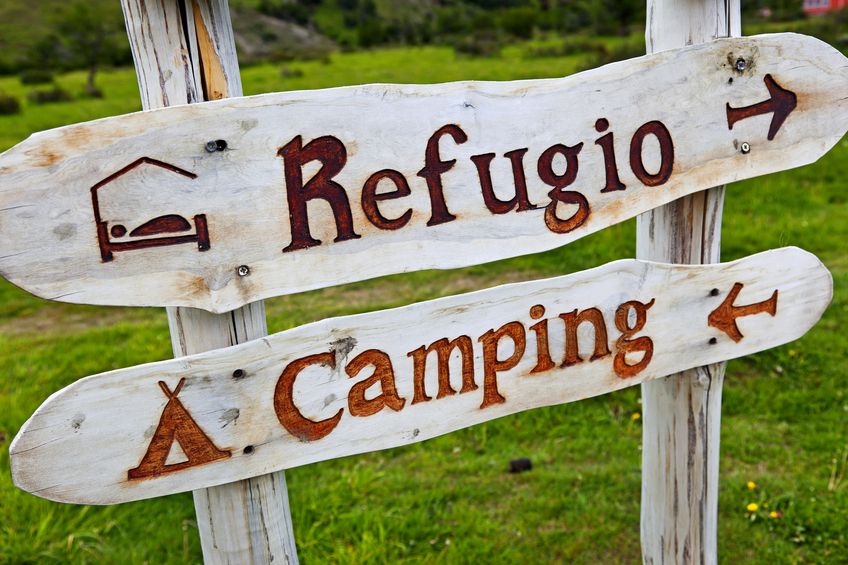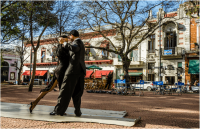For serious trekkers, Torres del Paine hiking is Patagonia’s pièce de résistance. With guided and self-guided tours to choose from, it helps to have an overview of the routes and other essential information before you make your pick. Don’t lace up your hiking boots and hit those trails just yet; instead, read our tips on the best seasons for visiting, essential equipment to pack and the types of accommodations you’ll encounter.
The routes
Whether you’re a dedicated hiker with seven to ten days to spare or a less-experienced trekker keen to dip your toe in with a four- to five-day trail, Torres del Paine has the routes to suit and the stunning vistas of classic Patagonian mountainous landscapes to make the effort all the more rewarding.
Both the W and Circuit treks pass alongside huge, rippling lakes and up to silent, magnificent glaciers. Sections of these two routes overlap to ensure that all visitors marvel at the arresting sheer granite towers – the torres – that are the true crowning experience of visiting the park.
Learn more about the ‘W’ and the Circuit treks with our article about Patagonia’s most famous hikes.
Weather and the best seasons to trek in Torres del Paine
Torres del Paine’s position at 50°S means that it’s exposed to exceptionally forceful prevailing westerlies. Winds at this latitude are able to circulate the entire globe without hitting land – or, until they arrive at Chile’s west coast. On rare occasions, they reach speeds of up to 110 mph (180kph) and contribute to the unpredictable climatic conditions for which the park is notorious; weather fronts are blown rapidly across the park, leading to almost immediate transitions between cloudless skies and heavy downpours. Visitors should be prepared for any climatic eventuality when trekking in the park.
 Many regard the period between November and March as the best time for hiking in Torres del Paine thanks to longer days and warmer temperatures which hover around 55°F (13°C).
Many regard the period between November and March as the best time for hiking in Torres del Paine thanks to longer days and warmer temperatures which hover around 55°F (13°C).
Necessary equipment for hiking in Torres del Paine
Our recommendations for essential equipment for Torres del Paine hiking are:
- Sturdy, waterproof walking boots that provide ankle support on trails with sections of loose, unsteady rock.
- A lightweight, breathable waterproof jacket and waterproof pants for wind and rain protection.
- A variety of layers to respond to changeable weather conditions.
- A high SPF sunblock, sunhat and sunglasses.
- A warm hat and waterproof gloves for cold nighttime temperatures.
- Thermal underwear for camping.
- Walking socks made of moisture-wicking fabrics to help prevent blisters.
- High-energy snacks such as dried nuts and fruit and chocolate bars.
Accommodations
Visitors arriving to hike in Torres del Paine have two options for accommodations.
Option One: Camping
Many hikers bring their own camping gear and carry all of their equipment in their rucksacks, including sufficient food for the whole trek. This is the cheapest way of experiencing Torres del Paine hiking, but packing and carrying equipment and food for ten or even four days is a heavy undertaking.
For those with less-inclination to carry an onerous backpack, serviced campgrounds along the route providing tents and food (including a daily lunch box) are an excellent alternative.
Option Two: Cabañas and shelters
If camping isn’t your forte, Torres del Paine also has the option of full-board packages in cabañas and shelters along the “W” and Circuit routes.
Both these accommodations are bookable in advance via Fantastico Sur and Vertice Patagonia. Other more luxurious lodges and accommodations are also available.
How to organize Torres del Paine hiking tours
Self-guided tours are easily organized but campground and accommodation bookings must be made in advance. The entry fee into the park costs $27 ($18.000 CLP) for foreign visitors and their are no ATMs or credit card facilities in the area; come prepared with enough money to cover your costs for the entire trip.
If you’re keen to learn more about guided tours of the park, contact one of our partner agencies located in your home country by using our agency finder.
9 comments
4 October, 2016 8:36 am
[…] is still possible and Torres del Paine National Park is transformed by a breathtaking layer of […]
8 October, 2016 8:05 am
[…] it’s fair to say that Torres del Paine National Park receives all the attention in trekking circuits, Patagonia is actually traversed by hundreds of […]
27 October, 2016 4:39 pm
[…] For further information about trekking in Torres del Paine, read our essential guide to visiting the park. […]
29 October, 2016 8:27 am
[…] our hiking in Torres del Paine essential guide for a list of all the equipment that you need and information about essential clothing and other […]
2 November, 2016 8:17 am
[…] grown in popularity with local tourists (aided, no doubt by the flourishing reputation of Torres del Paine as a global hiking hot spot) trekking remains a pastime mostly enacted by foreign […]
9 November, 2016 8:09 am
[…] Everyone’s in agreement that Torres del Paine is […]
21 November, 2016 5:22 pm
[…] of its most impressive landmark, the monolithic granite towers, few have managed to do it justice. Hike the Circuit or “O” and “W” treks as the only real way of appreciating this untamed wilderness ruled by glaciers and piercing […]
24 November, 2016 1:51 pm
[…] The emblematic torres of Torres del Paine National Park represent just just one of the many Patagonian landscapes that have been shaped by glacial forces. Indeed, the Patagonian Ice Sheet that once covered the southern Andes was responsible for forming much of the glacial landscapes that can be identified in Patagonia today. […]
25 November, 2016 12:41 pm
[…] The bottom line: Although the ‘W’ hike around Torres del Paine National Park is a lot more popular with visitors, fewer other walkers and more splendid scenery on the ‘O’ make it the ultimate Torres del Paine trek. […]







Leave a comment